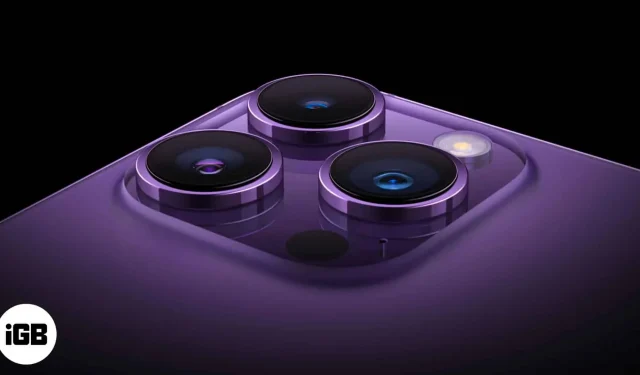What is Photonic Engine on iPhone 14 and how it works

One of the highlights of the iPhone 14 series is the improved camera features. Apple introduced its computational photography technology as the Photonic Engine. Interestingly, the Photonic Engine will only work on iPhone 14 models among other working iPhones running iOS 16. Sounds interesting, right? Let’s take a detailed look at the Photonic Engine on the iPhone 14 and understand how it improves the quality of photos in low light.
- What is Photonic Engine on iPhone 14?
- How the Photonic Engine improves low-light photography
- Photon Engine vs. Night Mode: Key Differences
What is Photonic Engine on iPhone 14?
The Photonic Engine is an advanced imaging pipeline that combines hardware, intelligent software, and machine learning components to improve camera performance by up to 49% in medium and low light conditions. So now your iPhone can capture more detailed images and display more vibrant colors.
Here’s Apple’s take on the Photonic Engine:
Through deep integration of hardware and software, Photonic Engine improves photo quality in medium and low light across all cameras: up to 2x on the Ultra Wide camera, 2x on the TrueDepth camera, and an impressive 2.5x on the new main camera. applying the computational benefits of Deep Fusion early in the image processing process to deliver exceptional detail and preserve fine textures, enhance color and retain more information in a photo.
Compared to iPhone 13, this built-in Intelligent Image Intensifier doubles the performance of Ultra Wide and TrueDepth camera sensors. The main camera will get a 2.5x zoom when shooting in low light conditions. But how did Apple make this possible? Let’s look at the smallest details of the Photonic Engine technology.
How the Photonic Engine improves low-light photography



Apple’s first milestone of computational photography was Deep Fusion in 2019. This mechanism takes many photos instead of just one and compiles all frames into one image. Before saving the final photo, the program optimizes the texture and color to get the most out of the iPhone’s camera.
The Photonic Engine on the iPhone 14 is a specialization of this Deep Fusion technology. The advanced machine learning algorithms in iOS 16 analyze the details and rework each image pixel by pixel. With a single click, your iPhone’s camera captures multiple individual frames at different exposures.
The Photonic Engine applies the Deep Fusion technique to uncompressed images in the middle of an image processing pipeline. Thus, it can display even the finest texture in the frame. Finally, the optimized result is saved as a snapshot on film in milliseconds.
Apple claims that photography in medium and low light has advanced significantly thanks to the Photonic Engine. In general, each photo will retain more texture, color contrast, and detail, and eliminate the usual image noise in dark areas. And the best part is that Photonic Engine runs in the background without any additional settings.
But don’t confuse Photonic Engine’s low-light enhancement with the existing night mode on the iPhone. That’s why:
Photon Engine vs. Night Mode: Key Differences
We are all very familiar with the iPhone’s night mode, which allows you to take great photos in low light conditions. According to Apple’s description above, this feature is similar to the Photonic Engine. But there is a catch! The Photonic Engine enhances all photos, focusing on the darker areas.
On the other hand, night mode only concentrates on images in low light. Therefore, it will continue to exist along with the Photonic Engine. Another difference is that if you want to click images in night mode, you must enable it. But the Photonic Engine is built into image processing and is applied to every shot by default.
This beautiful integration of machine learning and camera capabilities is made possible by the iPhone 14’s larger sensors, faster apertures, and more sophisticated lenses, combined with Apple’s own hardware. So what are the updates?
iPhone 14 hardware updates for Photonic Engine
The new hardware in the iPhone 14 models is required for the Photonic Engine as it’s not just a software feature. Even if the iPhone 14 and 14 Plus have the same 12MP main camera, the sensors and lenses have improved a lot.
In addition, the 48-megapixel main sensor in the iPhone 14 Pro and 14 Pro Max can of course capture sharper images. In addition, the Image Signal Processor in the A16 Bionic chip and Dolby Vision support in the display enhance iPhone image optimization.
That’s all for today guys!
I can’t wait to see what the iPhone 14 is capable of as my iPhone 13 Pro Max produces amazing images in low light. What is your opinion on the new iPhone 14 series? Let me know in the comments.
Leave a Reply